Barbara Sackl’s documentary on the Huichol-Wixaritari school called Tatuutsí Maxakwaxí, in Mexico’s Sierra Madre, shows how it preserves their ancient culture by educating the young by providing skills to participate in the official Mexican educational system.
The Wixaritari Culture and their Education
Article written in collaboration with Barbara Sackl.
The Huichol or Wixaritari People are a Mexican indigenous group inhabiting the remote reaches of the Sierra Madre Occidental. Close to 21,000 Wixaritari over the age of five live in a territory including the states of Jalisco, Durango and Nayarit. Their traditional beliefs and way of life have persisted through history despite the often destructive influences of Aztec, Spanish, Catholic, and modern Western-industrial.
The Hikuri Pilgrimage – Traditional Religious Practices
Central to the traditional religion of the Wixárika (the adjectival form of Wixaritari) is the yearly pilgrimage crossing the San Luis Potosí desert in the region of Real de Catorce to a place called Wirikuta, the homeland of their ancestors. They would collect and ingest hikuri (the peyote cactus, Lophophora williamsii) as a tool to dialogue with the ancient spirits. Traditionally, on their more or less 17-day walk to the sacred place they fasted, only eating fruits found along the way. In recent times, private properties have encroached on traditional paths rendering the journey on foot almost impossible. Hence, most Wixaritari visit their important sacred place by bus. This spiritual experience which would last almost a month now takes place in a matter of days. Occasionally, small groups of Huicholes still take the risk to fulfill the pilgrimage in the traditional way.
In Wirikuta, they gather and take hikuri / peyote with the intention to deepen their communication with spiritual ancestors, seeking insight and wisdom. The shamans decide if somebody needs the help of peyote and to which degree, or if not. It’s still part of everyday life of many Wixaritari to maintain contact with these divine ancestors through dreams, meditation, sharing their dreams with others, etc.
Use of peyote has been popularly distorted and venerated by North American hippies and counter-cultural literary vision-seekers, but casual use does not resemble native practices.
Social and Environmental Challenges
The Huichol have conserved their distinct culture despite social and environmental challenges. The influence of Western values has raised the importance of money among the Wikaritari. They have few opportunities to earn it, for example by planting and harvesting crops in medium- and large-size agricultural operations, as well as enlisting as day-laborers. These circumstances make it attractive to work, for slightly higher wages, in cultivations for the drug cartels. They mostly do not participate in trafficking, but the region has become significantly more dangerous since the cartels have proliferated.
Wikaritari independence and traditions are endangered as well by social problems. Increased health concerns from tobacco plantation work, construction of roads in nearby Jalisco has threatened Wixarika lands, and phenomena such as soil erosion and climate change have resulted in a disequilibrium leading to extreme poverty and disease.
HUICHOL DOCUMENTARY: TATUUTSÍ MAXAKWAXÍ SCHOOL CELEBRATES 10 YEARS
and TATUUTSÍ MAXAKWAXÍ TAKES ON THE CHALLENGES OF TWO WORLDS
By Barbara Sackl and Abel Alvarado Torres
A documentary in two parts about an independent school Tatuutsí Maxakwaxí of the Wixaritari, in the Sierra Madre Occidental of Mexico. The school’s main mission is preservation of their ancient culture. It cultivates their indigenous perception of life and cosmos, providing life tools for their young people, enabling them to participate in the official educational system of Mexico.
While the first movie shows the two-day celebration of the school’s 10th anniversary, the second part deals with its everyday work, such as classes, workshops and, most importantly, the three assemblies of the school that constitute its path. Please see below for English translation of the trailer, subtitled version to come.
Tatuutsí Maxakwaxí. The school was named Tatuutsí Maxakwaxí in honor of their divine ancestors, powerful and wise spirit beings who had visions and insights. Four of these, a woman named Tatei WaRarimari and men called Tunuwame, Tatuutsí Maxakwaxí and Watakame, came together and created a circle, which contained the sky and the earth. They represented the world with a symbol, placing two stones in the middle of this circle. That was the first tuki – a sacred house, created in the image of the earth and the sky. Even today, every community of the Wixaritari has its tuki.
The ancestors, after thus completing the circle, Tatuutsí Maxakwaxí and Tunuwame left and turned themselves into rain. And Watakame and his lady, Tatei WaRarimari, stayed to take care of what the ancestors had left behind.
After Tatuutsí Maxakwaxí – ancestor of construction and the teachings – this school is named. The Wixaritari call Tatuutsí Maxakwaxí also: our great grandfather deer of the white tail (Odocoileus virginianus).
STORY: Pamparios: A Trip with the Huicholes to Collect Peyote
History of the Huicholes
Some scholars propose that in pre-Columbian times the Huichol-Wixaritari were originally Guachichil from the desert around Zacatecas and San Luis Potosí and were part of the Chichimec culture. According to this theory, ancestors of contemporary Huichol migrated westward to the parts of Nayarit, Jalisco, Zacatecas, and Durango in which the rugged Sierra of the Huichol is found, shortly before or after the arrival of the Spaniards.
“Huichol” appears to be a corrupted tribal name from colonial times, as they call themselves Wixaritari.
Others believe they had been longtime residents in the Sierra, with a strong orientation to the Pacific Coast. Regardless of their origins, it is likely that the Wixárika culture consisted of four or five tribes, each with distinct regional traditions.
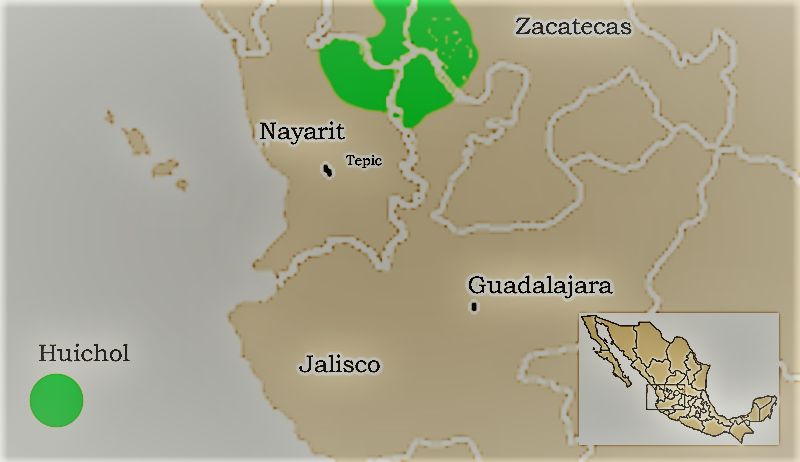

By 1722, Spanish troops had invaded the nearby Sierra, but the Franciscans who attempted to establish missions among the Wixaritari people met with little success. Independence from Spain meant the end of Spanish-chartered Indian communities in the sierra, which opened Wixárika communal lands to mestizo cattlemen and colonists. A ten-year revolution ensued in which Wixaritari and Cora joined forces under the Indian leader Lozada to protect the Sierra from further foreign encroachment.
The Mexican Revolution reached the Sierra in 1913, and the Wixaritari fought to keep neighboring mestizos and Pancho Villa out of their territory by siding with Carranza. Afterward, many Wixaritari scattered into the mountains and settled in Ranchos, a grouping of a few families and their corn fields and pasturage.
In the 1950s, the Catholic Church again began to make inroads into Wixárika communities, constructing airstrips and several missions nearby. Even greater changes occurred in the 1960s when, under then President Luis Echeverría, the National Indian Institute (INI) sponsored a regional development program known as Plan HUICOT (for Huichol-Cora-Tepehuan). This government agency developed projects designed to integrate Wixaritari into the mainstream of Mexican national culture. Airstrips and roads were built linking the isolated communities to the outside world. Agricultural projects were begun that introduced tractors, fertilizers, and different strains of crops.
Many Wixaritari were interested in airstrips to have faster access to the surrounding world. The shaman featured in the film, Don Rosalío Salvador Carrillo, now 84, became a spokesman to the offices of President Echeverría to petition on behalf of airstrips on the lands of the Wixaritari. Some believe he had a strong influence on the President.
Don Rosalío was one of the first of his people to trade with flower, sugar, soap and other basic goods in his communities. Before the airplane era and more recently the pick-up era, he traveled by horse and mule, taking sometimes two weeks to reach the closest mestizo village. In the 1960s, he cooperated with the Franciscans to initiate education in the Sierra for his brothers and sisters. Yet, some regions resisted the Franciscans until much later, sending the monks away and only nominally granted them access in recent times.
In the end, Don Rosalío and the Wixaritari remained unhappy with the results of bringing Franciscan school-education to the Huichol mountains. As a result, the autonomous school Tatuutsí Maxakwaxí was developed with Don Rosalío himself donating the land.
The region of the Huicholes is now a religious blend. Some communities adhere to Catholicism. Others have conserved their ancient values and culture, maintaining a vivid spiritual attitude toward every aspect of life, yet always with humility and respect. Mestizos continue to invade Wixárika lands looking for homesteads, pasturage, farmland, and timber to cut, but the communities persist anyway.
Subtitles for the trailer:
Shaman: Today is the right moment to celebrate and I’m very thankful that people from all over are with us.
A Girl: It is my wish that all young people here will keep studying and prepare themselves, so that someday this community will be strong and can count on people helping here.
Teacher: The meaning is not about what you can touch. But when we say, Tatuutsí Maxakwaxí, we refer to the deer on the poster, the peyote and to the feathers there.
Woman: The school strives for indigenous autonomy. The school wants the pupils to be proud of their own culture and wants them to be self-supporting as the school wants to be self- supporting.
A Boy: I’m a former student of the secondary school, Tatuutsí Maxakwaxí. I am proud of this school, because they taught me to speak two dialects. They gave me two weapons – Spanish and our language.
TATUUTSÍ MAXAKWAXÍ CELEBRATES 10 YEARS
TATUUTSÍ MAXAKWAXÍ TAKES ON THE CHALLANGES OF 2 WORLDS
A female Teacher: Formerly there weren´t any schools in our region. I think we had only primary schools but no secondary schools.
Teacher: The Wixa doesn´t know the whole solar system. He only knows… what? The sun, our planet earth, the moon. But something very important: how do the Wixa maintain those three planets? They sacrifice to them.
The Wixarika class: Teacher: Nieréme – he who sees inside.
Nieréme: Present
Teacher: Utsima – she who keeps the corn / the cornkeeper.
Utsima: Present.
Teacher: Hait+akame – he who walks in front, the first.
Hait+akame: Present
Teacher – compu: Today´s goal is to make your personal timetable.
Teacher – Wixarika territory: I´ve brought a map you can copy – one for the women and one for then men.
Teacher – dreams – gods: We dream that the Gods speak to us, right? Because we can’t see the Gods – only in our dreams.
Assembly: (a boy sings:) …. now, the time has come to talk without lies.
Woman: We’ve heard what the director’s told us parents. Now it is our turn to act.
Boy: What’s your opinion, compañeros? Can they go back to work or not?
Teachers´ assembly: Teacher: Certain pupils should give presentations in certain subjects. Teachers, you should give them special assignments researching in the community.
Teacher – outdoor: From 3:30 p.m. to 5:30 p.m. we have lessons in various workshop areas of the school.
Student on the football court: Our school is called Tatuutsí Maxakwaxí in honor of our ancestors who lived before us.
Student in the bakery: We have a cooperative store and we sell the bread there.
Teacher: See you tomorrow! We´re going home.
A documentary in two parts about an indigenous school of the Wixartiari in the Sierra Madre Occidental of Mexico.
Sources:
Follow WilderUtopia on Facebook…
Updated 10 March 2017

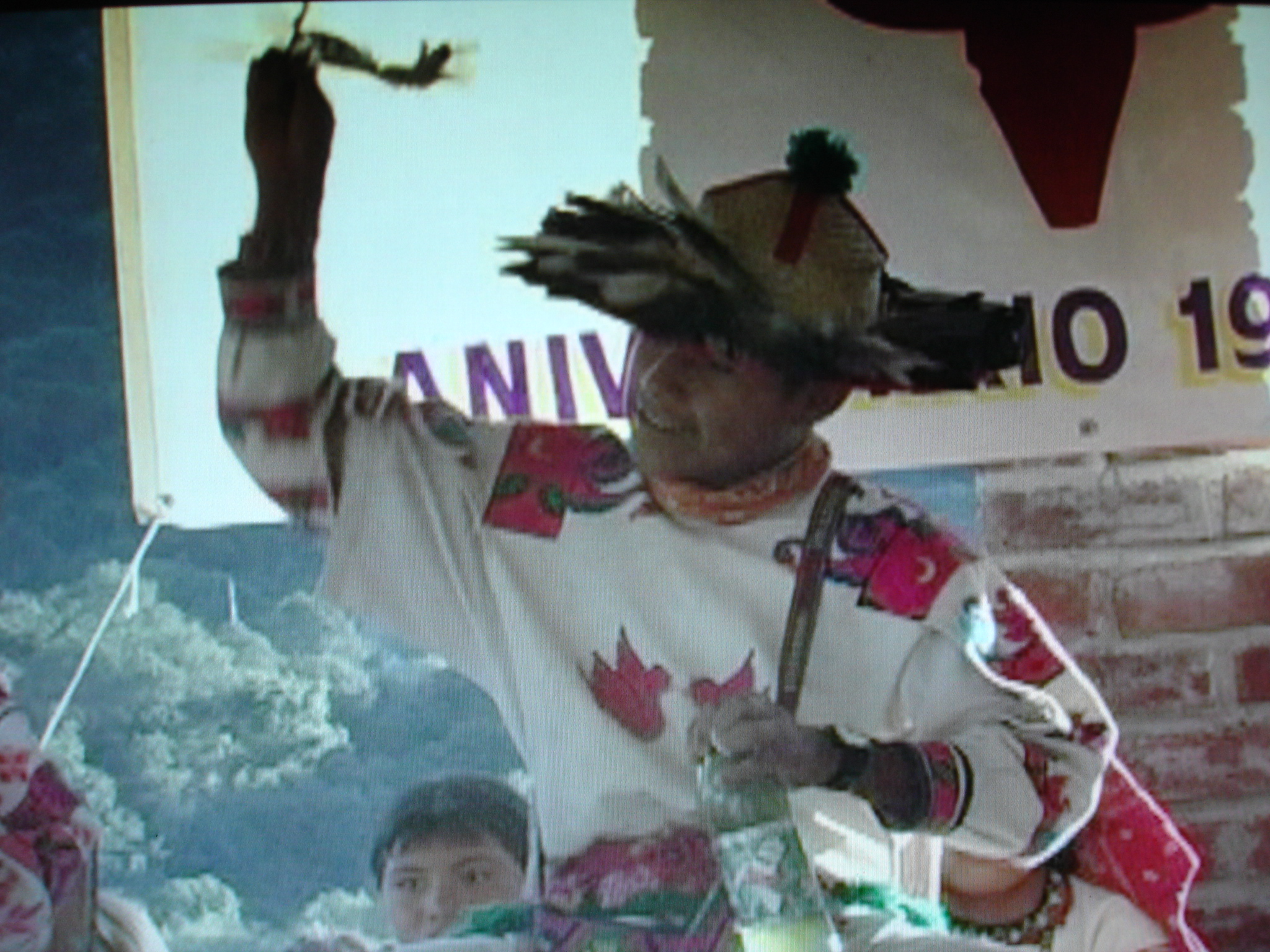

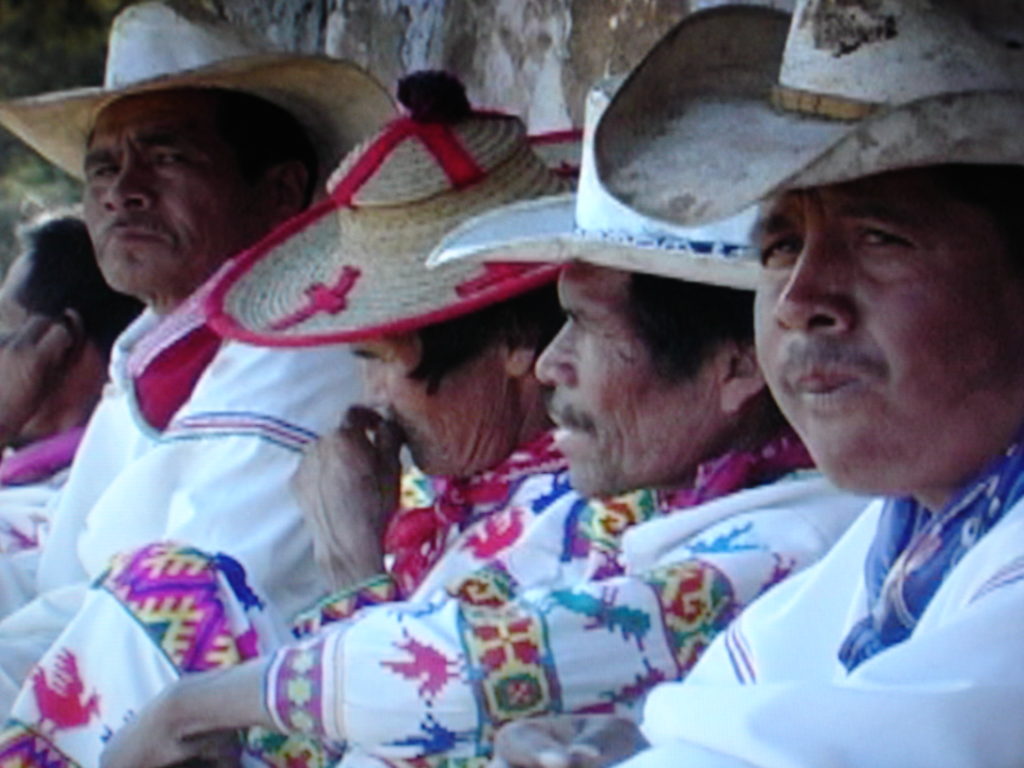
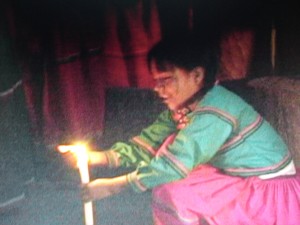
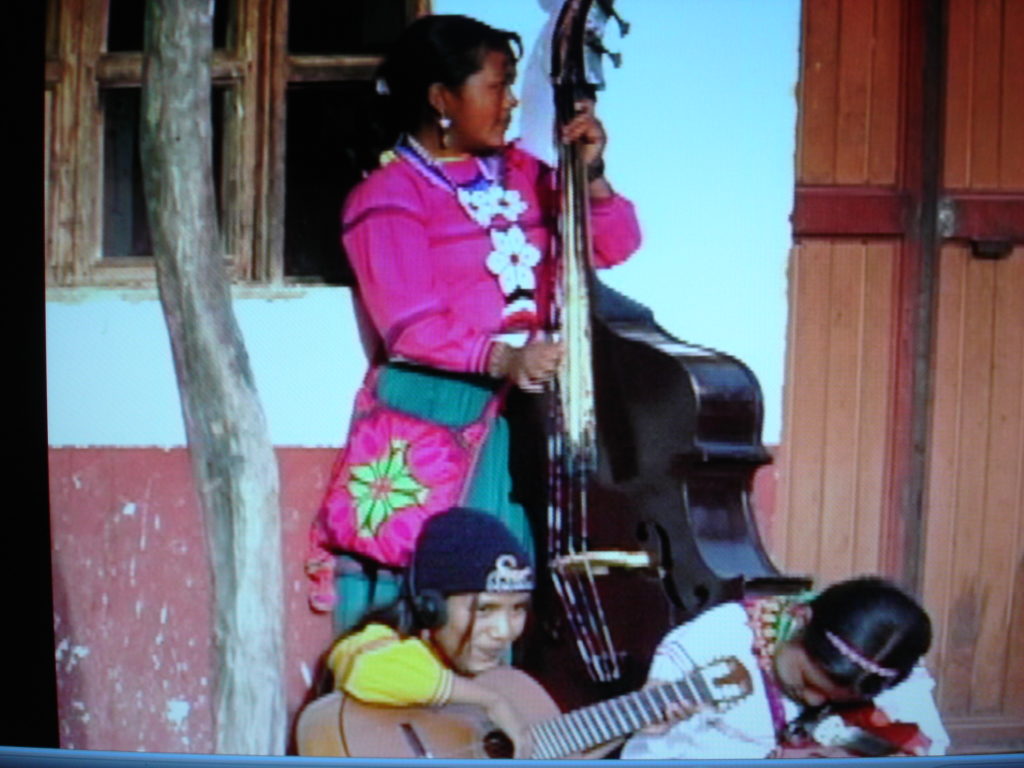
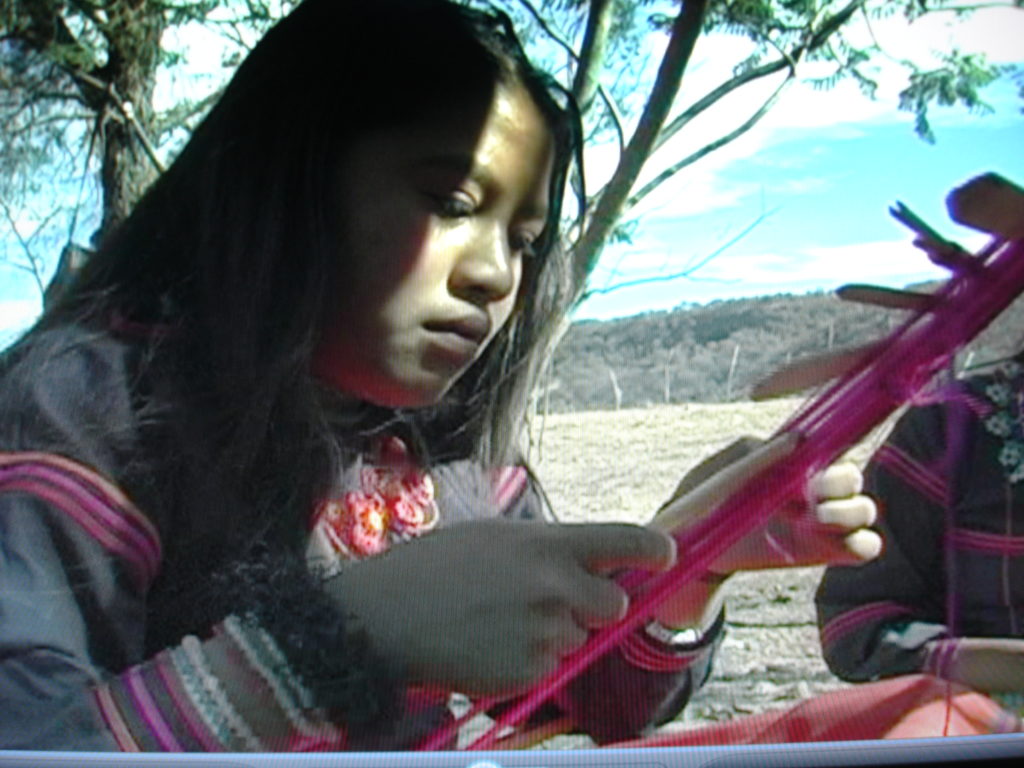

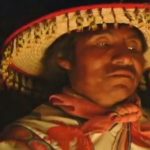
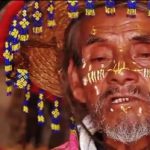
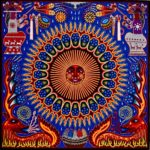
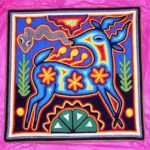






Pingback: Pamparios: A Trip with the Huicholes to Collect Peyote | WilderUtopia.com
Pingback: The Huichol Struggle of Life and Spirit | WilderUtopia.com